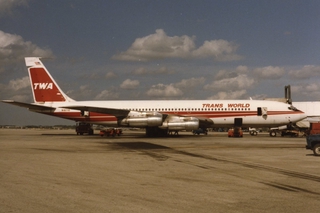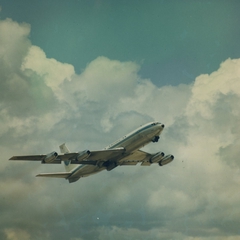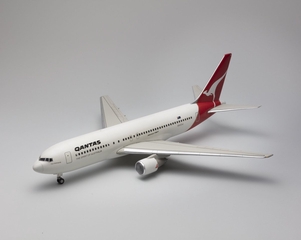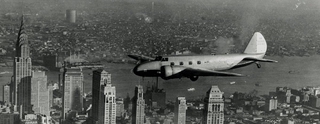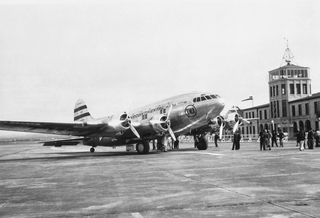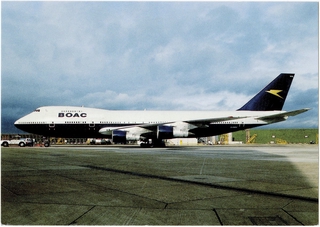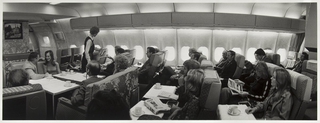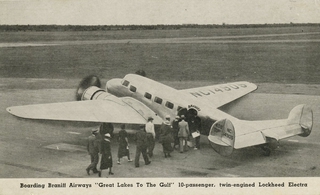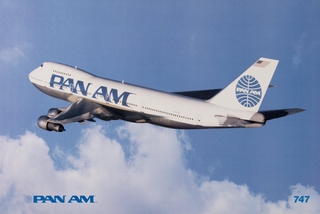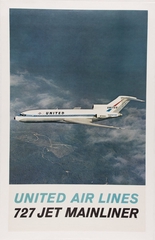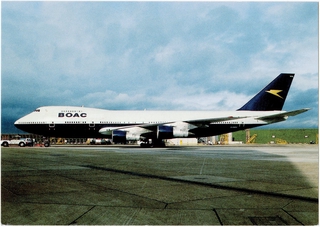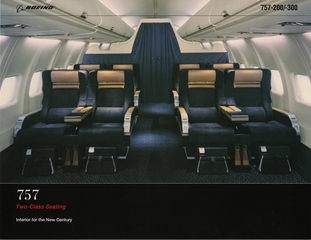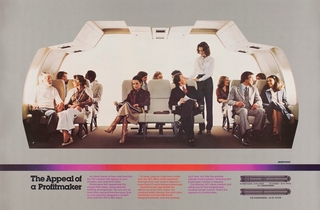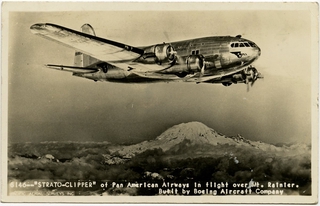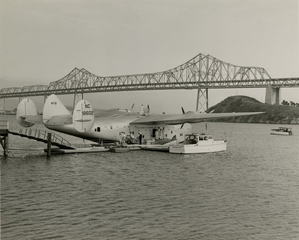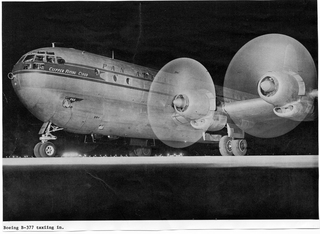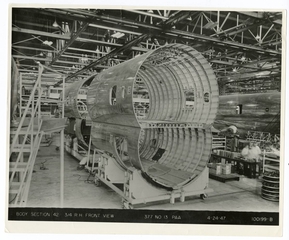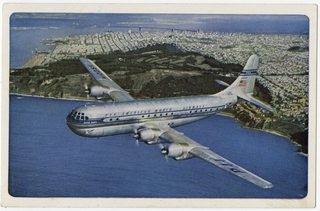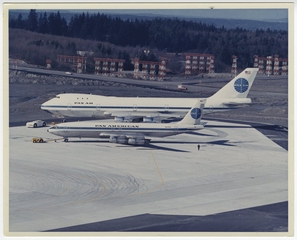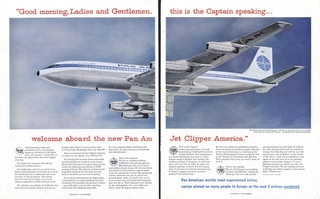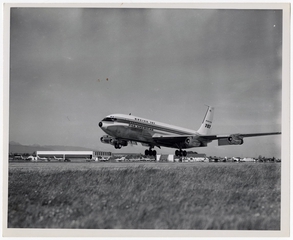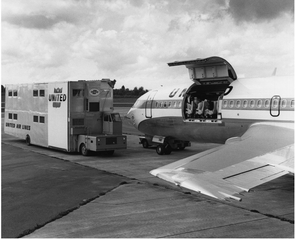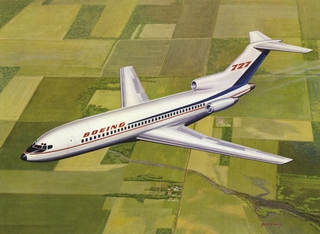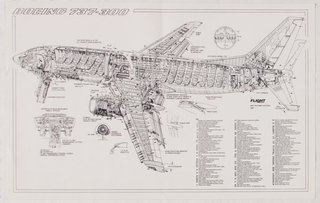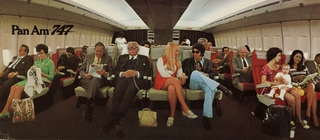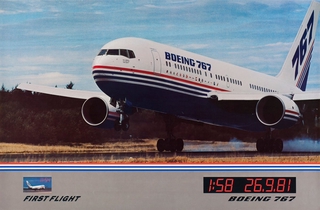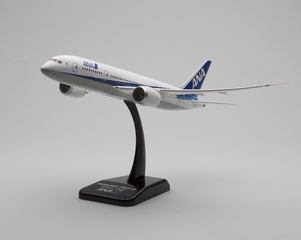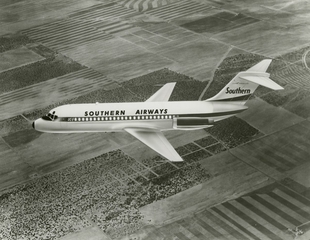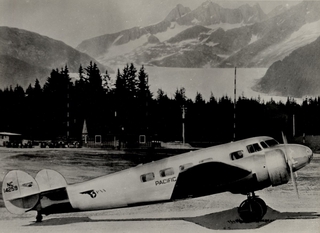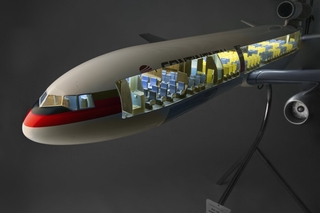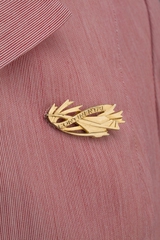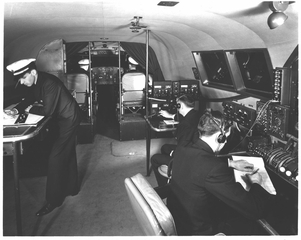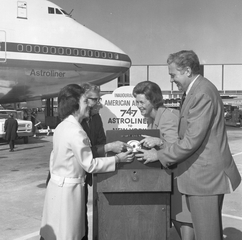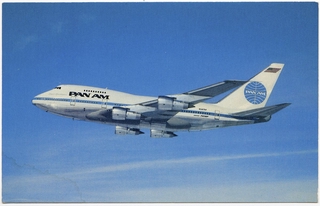Search results for Boeing
that are a tweet
See all the search results for this query
TWA's last scheduled Boeing 707 flight took off on its final departure #onthisday in 1983, flying from MIA to JFK. This Boeing 707, registration number, N18710, joined TWA in March of 1967. #avgeek #TWA
This tweet was posted on October 30, 2018.
Taking off from Idlewild airport in NY #onthisday in 1958, #PanAm became the first airline to inaugurate scheduled transatlantic commercial jet service on a Boeing 707. 111 passengers boarded the jetliner, named “Clipper America,” bound for Le Bourget Airport, Paris. #avgeek
This tweet was posted on October 26, 2021.
The #767 was the first two-engine widebody airliner to be produced by #Boeing. A smaller widebody airliner than the 747, the 767 had a capacity between 200 and 300 passengers and the range for most transoceanic routes. #AviationEvolutions
This tweet was posted on November 30, 2018.
The #Boeing 247 entered service with United Air Lines in 1933. 75 of the aircraft were eventually built, with most going to the #United’s fleet, primarily operated on United’s “Mainline” transcontinental route until the mid 1930s. #AviationEvolutions
This tweet was posted on June 04, 2018.
The #Boeing 307 #Stratoliner was the first commercial airliner put in service to have a pressurized cabin in 1940. #AviationEvolutions
This tweet was posted on July 05, 2018.
The #Boeing 747 offered the airline a comfortable, roomy, and luxurious cabin interior. In an advertisement, #BOAC proclaimed “you will hardly believe you're in an aircraft.” #WidebodyAV #avgeek #MuseumFromHome
This tweet was posted on April 07, 2020.
The #Boeing 747 was 35 feet longer, 10 feet wider inside the cabin than the DC-8 and could carry almost 200 more passengers. #TheMainline
This tweet was posted on November 07, 2017.
The #Lockheed #Electra 10, developed to compete with the #Boeing 247 and the Douglas DC-2, made its first flight #onthisday in 1934. #avgeek
This tweet was posted on February 23, 2017.
The 1970s was a watershed decade in the development of large-capacity airliners. Pan American World Airways introduced the much-anticipated transoceanic “widebody” Boeing 747 in 1970. #ByTheBook
This tweet was posted on September 03, 2019.
The 727 was Boeing's only tri-jet aircraft and, at the time of its production, Boeing's best-selling jet with over 1,800 sold. Have you ever flown on a Boeing 727? #TheMainLine
This tweet was posted on January 10, 2018.
The 747 offered #BOAC a far more comfortable, roomy, and luxurious option compared to the narrow-body Vickers VC10. It also had a capacity that was more than double that of the VC10 or the Boeing 707. Did you ever fly on a BOAC 747? #WidebodyAV #avgeek
This tweet was posted on November 26, 2019.
The 757-200, the first variant produced, carried up to 228 passengers and had a range of approximately 3,900 nautical miles (7222 kilometers). #WingWendesday #Boeing
This tweet was posted on September 29, 2021.
The 767 was the first two-engine widebody airliner to be produced by Boeing. It was designed to be a smaller widebody airliner than the 747, with a capacity for 200-300 passengers and the range for most transoceanic routes. #WingWednesday
This tweet was posted on September 22, 2021.
The Boeing 307 Stratoliner was put into service #onthisday in 1940 by both Pan American and Transcontinental & Western Air (TWA). The #Stratoliner was the first commercial airliner to have a pressurized cabin. #AvGeek #AviationHistory
This tweet was posted on July 08, 2022.
The Boeing 314s served not only Pan American's transpacific routes but also their transatlantic routes.
This tweet was posted on January 13, 2016.
The Boeing 377 Stratocruiser was considered the most luxurious airliner aloft when introduced by Pan American World Airways in 1949. #WingWednesday
This tweet was posted on May 12, 2021.
The Boeing 377's unique, pressurized, “double-bubble” fuselage was equipped with two decks: the upper contained a roomy main cabin, while the lower featured the highly popular cocktail lounge. #WingWednesday
This tweet was posted on May 12, 2021.
The Boeing 377’s four twenty-eight-cylinder Pratt & Whitney radial engines enabled the Stratocruiser, as its name asserted, to cruise in the stratosphere at over 300 miles per hour. #AviationEvolutions
This tweet was posted on December 14, 2017.
The Boeing 707 and 747, introduced by #PanAm in 1958 and 1970 respectively, each revolutionized the aviation industry. Check out the difference in sizes of these iconic planes. #avgeek #aviation
This tweet was posted on March 01, 2018.
The Boeing 707 carried 111 passengers, 44 more than BOAC’s Comet 4.
This tweet was posted on March 11, 2016.
The Boeing 707 was originally developed following an initial request in 1955 from Pan American World Airways for a large capacity jet-powered airliner. #WingWednesday
This tweet was posted on June 23, 2021.
The Boeing 727 Combi (short for combination) was designed to carry varied capacities of passengers and freight, depending on the demand at the time, and came with removable bulkheads, seats, and modular kitchen units. Did you ever fly on a Combi plane? #avgeek
This tweet was posted on September 04, 2018.
The Boeing 727 was a medium range, intermediate-capacity jetliner that could serve regional airports with short runways. It featured a clean swept wing, a high horizontal stabilizer, and a unique tri-jet configuration. #WingWednesday
This tweet was posted on July 21, 2021.
The Boeing 737 was designed to be a short-to-mid-range regional jetliner and incorporated many of the assemblies and components used in the Boeing 727. It featured two turbojet engines in traditional under-wing mounts. #WingWednesday
This tweet was posted on August 04, 2021.
The Boeing 747's massive fuselage incorporated a small upper deck, and a lower, main cabin, which was wide enough to seat ten passengers across with two aisles. #WingWednesday
This tweet was posted on August 18, 2021.
The Boeing 767 took off on its maiden flight on September 26, 1981, and was introduced into service with United Airlines a year later on September 8, 1982. #WingWednesday
This tweet was posted on September 22, 2021.
The Boeing 787 is the latest wide-body jet airliner manufactured by Boeing. Named the Dreamliner, the aircraft was first introduced by All Nippon Airways (ANA) in 2011. #WingWednesday
This tweet was posted on November 17, 2021.
The DC-9 & its many variants were highly successful for airlines worldwide. The aircraft was produced for 41 yrs, first by Douglas, then McDonnell Douglas, & finally Boeing in numerous variants, with final deliveries of its last derivative, the Boeing 717, in 2006. #WingWednesday
This tweet was posted on July 28, 2021.
The First Boeing 727 Prepares for its Last Flight http://t.co/9LWdroaNEn via @AirlineReporter
This tweet was posted on August 11, 2015.
The Lockheed Model 10 Electra was introduced in 1935 as the manufacturer's first all-metal aircraft, developed to compete with the Douglas DC-2 and Boeing 247. #WingWednesday #avgeek
This tweet was posted on February 24, 2021.
The McDonnell Douglas DC-10 was initially designed to be operated on transcontinental or regional routes with fewer passengers than the Boeing 747 thus broadening the widebody market to more airlines and a greater proportion of the traveling public. #WidebodyAV
This tweet was posted on December 05, 2019.
The attention to detail on Continental's late 1960s uniform includes a brooch with a Boeing's SST. #FashionInFlight
This tweet was posted on September 09, 2016.
The cockpit of the Boeing 314 measured 21 feet by 9 feet with over 6 foot-tall ceilings. #PanAm #AVGeek
This tweet was posted on March 07, 2016.
The early days of airmail - a Boeing Model 40-A at Mills Field, 1927: http://t.co/esB6jx1q4F #avgeek #tbt
This tweet was posted on May 08, 2014.
The first #AmericanAirlines #Boeing 747 jet flight to New York took off from SFO #onthisday in 1970. #SFOHistory #avgeek #aviationhistory
This tweet was posted on April 19, 2017.
The first #Boeing 747 SP (Special Performance) was delivered to Pan American World Airways #onthisday in 1976. The 747 SP was a smaller version of the 747 designed to have extra-long range and the ability to fly non-stop from New York to Tokyo. #avgeek
This tweet was posted on March 05, 2020.

